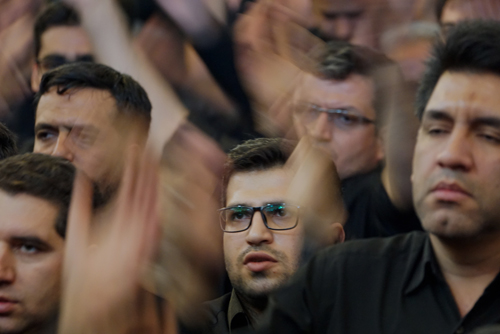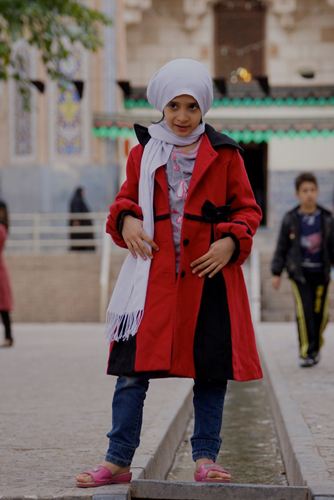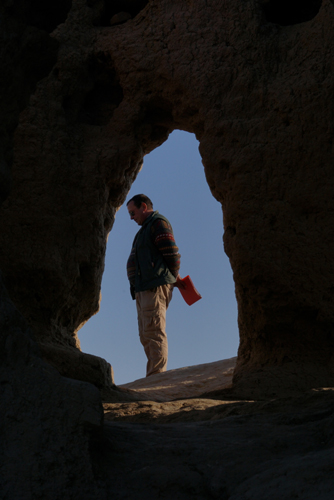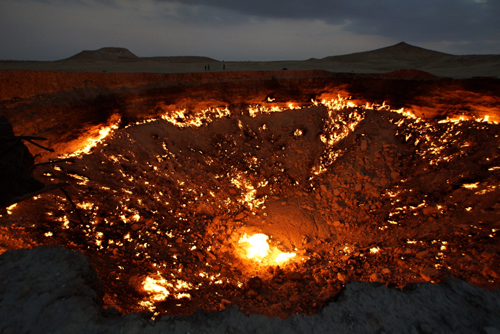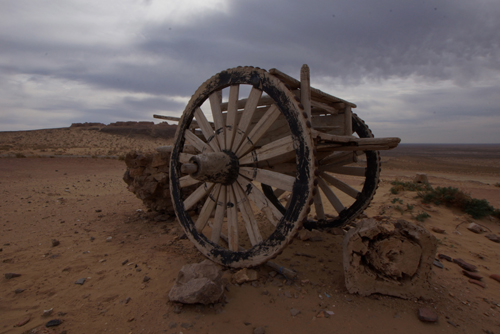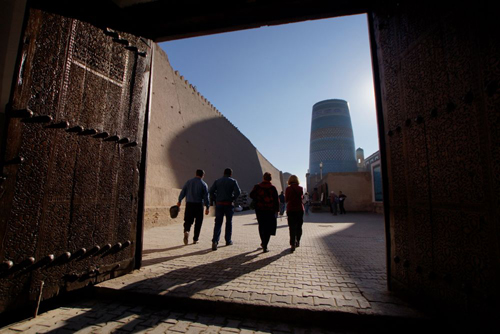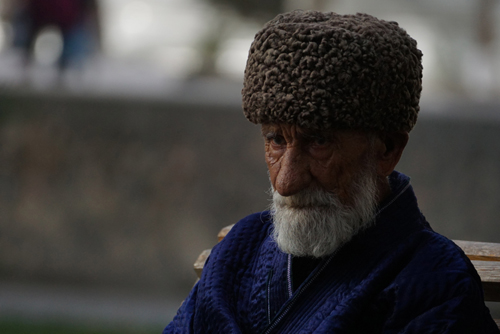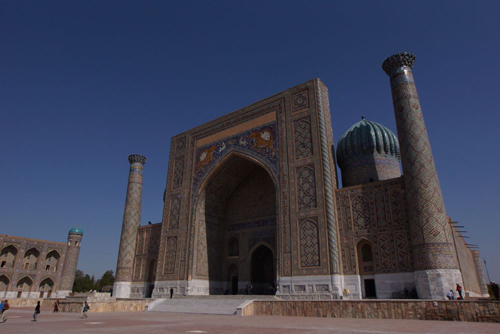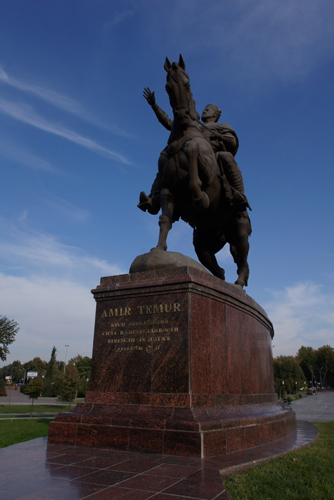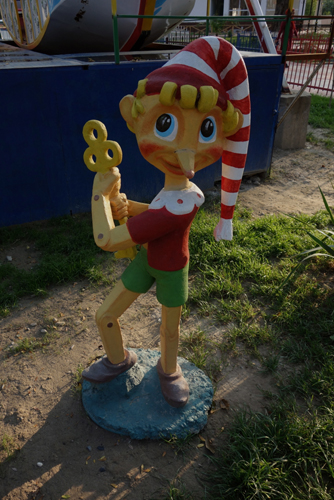Our new guide, Rasoul met us at the airport, he was to be our companion for twelve days.
We only had one day of site seeing planned on Yazd, as a religious holiday was on for the following two days.
This holiday is for the mourning ceremony of Imam Hussain or ‘Muharram’. It’s ten days of activities, with the final two days being a public holiday – the last day is known as Ashura.
Imam Hussain was the grandson of the Prophet Muhammad. He was killed along with 70 members of his family, including a baby, in 680AD by armies of the Caliph Yazid in Karbala, Iraq.
He is seen by the Shiite Muslims as a martyr and a champion of peace.
The first stop, on our only official day of sightseeing in Yazd, was the Zoroastrian Fire Temple, or Yezd Atash Behram, that was established in 1932. This particular fire has been burning since then and was gathered from 16 sources.
It’s regarded as one of the holiest in Zoroastrianism.
From there we went to the Towers of Silence, which is a burial ground for Zoroastrians. Here the bodies of the dead are placed in a circular open area and left to the scavenging birds. This was because the Zoroastrians believed that human flesh should not come in direct contact with the earth. The Nasellar, or pall bearer, was the only person who could handle the corpses and he was isolated from the rest of the community. There is one remaining Nasellar in Yazd, believed to be in his 90s, he makes a good living from having his photo taken.
Masjed-e Jãmeh or Friday Mosque was next. Built in the Persian style in the 12th century and rebuilt in the 13th and 14th, it features the highest pair of minarets in Iran.
Less spiritual and more practical, we also went to the Yazd Water Museum. This contained Qanats or wells that are built on exactly the same principals as the Kares wells in Turpan, China.
The Bagh-e Dolat, built in 1750, with Iran’s tallest Badgir or wind tower and is situated in the Dowlat Dolat Gardens is another UNESCO site. This is a beautifully proportioned building that’s studied by Iranian architectural students. There was a group making measurements and their professor took much delight in giving us a geometry lesson.
Old Yazd is a City Museum and due to be made a UNESCO Wold Heritage Site in 2016.
It’s easy to understand why.
Our secular site seeing was over and we were back into the religious activities of the Muharram. A big part of it revolves around a theatrical celebration of Imam Hussain’s life. Within the city there are many areas that are set aside for ‘Nohe Khani’ or performances with the ‘Sineh Zani’ or chanting and chest beating.
On our first night in Yazd we went looking for a place to eat.
Not every hotel in Iran has a restaurant and it was suggested that the Sonati Mehr Hotel, a sister hotel to ours, might be able to provide a meal. When we arrived there were hundreds of locals milling around. We asked if there was a table available and were immediately ushered into a huge banqueting hall and sat with a German couple, their guides and an Iranian family.
There were hundreds of locals already there and a handful of western tourists.
We watched a Nohe Khani, that involves a lead singer and a large chorus of men, all dressed in black. They sang in response to the singer and beat their chest to create a rhythm – they became human percussion instruments.
You could smell the testosterone.
Eventually, after a number of these groups performed, the meal came out, and it was free, provided by the hotel.
Free food is offered to anyone who wants it during the Muharram. People line the streets to receive a handout. As it was explained to us, they are not poor, it’s just courtesy to accept what is offered.
The tradition is born out of a superstition that if you ask Imam Hussein to grant you a wish, and that wish is granted, then you need to ‘pay it back’
Offering free meals is a common way of repaying your debt.
Just as we were continually invited to weddings in Uzbekistan, we were also asked for lunch in Iran.
This is against the law but they invite you anyway.
We were fortunate to enjoy a very pleasant meal with a local family. Our plates were piled high and we weren’t allowed to refuse a thing.
The next evening we went to another Nohe Khani where we were interviewed for a promotional video, made by the Imam Hussain Fan Club.
This was the largest we had seen and we were given VIP viewing positions overlooking the performance. No sooner had one group finished than another would start. There were thousands of performers and it was bedlam as the changeover took place.
I know how inappropriate it is to use a Yiddish word to describe a Muslim festival, but it was another shamozzel.
We were then whisked away to have another free meal, this one was with the locals in a neighborhood of Yazd.
As we were told, Iranians will always find a way to do things that is frowned on by the authorities.
They brew beer, and ferment wine, when alcohol is outlawed, install satellite dishes to watch world TV, when it’s banned and continually invite tourists home for lunch or dinner – even though it’s forbidden. I don’t know why, apparently we are all spies for the western authorities.
In Yazd there was so much happening, in so many places, that I felt a bit like a war correspondent. going from hot spot to hot spot, but never having enough time to file a story.
Ashura is the tenth day of the Muharram and the most important.
Our last day in Yazd was the Ashura and we were put on a big green city bus and taken out of town to see some of the final day celebrations – again this was all free.
There was a Muslim cleric on board and he gave us a briefing on the importance of Imam Hussein to the Iranian people.
Coincidently, on the morning of this bus tour, an article appeared on the ABC website about an Ashura procession in Sydney’s Botanical Gardens. The cleric was so impressed about the positive coverage in Australia, that he read the article out to the tourists.
Our first stop was Mehriz where we were witness to a theatrical re-enactment of the Battle of Karbala, where Imam Hussein was martyred.
This included a sacrifice of some local livestock.
I certainly wasn’t ready for that.
After the parade the tourists were bundled off to lunch, for yet another free meal.
Yazd turned out to be very cheap place to stay.
Our second stop was at Taft to see the lifting of the symbolic coffin of Imam Hussein. This ceremony happens all over Yazd and Iran. This particular ‘coffin’ is one of the largest and weighs 9,000 kg and requires 300 men to lift and then carry it around a rectangle three times. The coffin is in the shape of a cyprus tree, which is a symbol of freedom for the Shiites.
We have been very fortunate with our time in Yazd as we have been able to visit the sites and join in a local festival.
After our final day’s activities we raced out of Yazd for an overnight stay in the Caravanserai Zein-o-din.
Caravanserais are said to have originated in Iran over 2,500 years ago. This one was built by Shah Abbas over 400 years ago and is part of network of 999 such hostels. They were built to unify the trade routes and make them safer.
They were resting places for the travellers on the trade routes that covered Central Asia, North Africa and Eastern Europe.
They were especially popular along the Silk Road.
The Caravanserai Zein-o-din is round while most others are rectangular. It wasn’t just a shell fitted out as a four star hotel, like others we have seen, but retained many of the original features.
All the rooms came off a large circular hallway and were curtained off. There was a common washroom and a large central courtyard, covered with a sunshade.
After dinner we were entertained with an impromptu concert by a few of the Iranian guests. One multi talented fellow sang, played the recorder and the Tar, a Persian instrument that is shaped like a gourd.
After much prompting, another guest whistled, not using his lips but his tongue.
It was a very relaxing night, after a hectic day.
